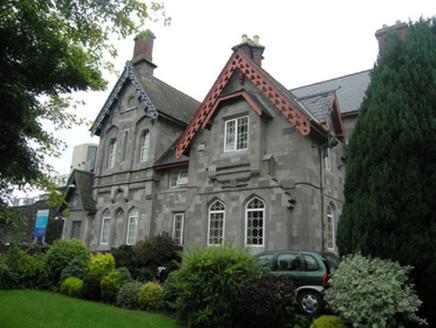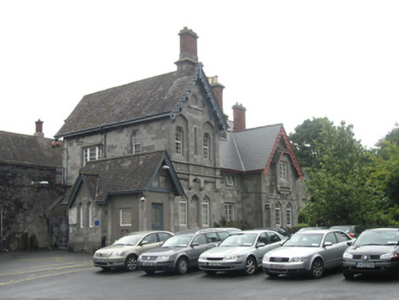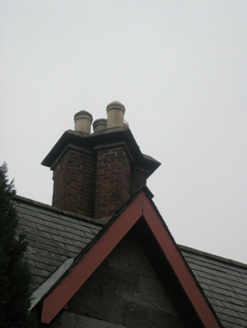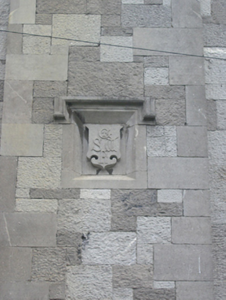Survey Data
Reg No
12504129
Rating
Regional
Categories of Special Interest
Architectural, Artistic, Social
Original Use
Railway station
Historical Use
Station master's house
Date
1845 - 1850
Coordinates
246932, 198659
Date Recorded
29/08/2008
Date Updated
--/--/--
Description
Attached asymmetrical four-bay two-storey Tudor Gothic style railway station, opened 1847, incorporating station master's house, built against the railway embankment. Steeply pitched artifical slate roof, limestone ashlar chimney stack plinths with brick stacks and clay pots, one a diagonal stack arrangement on the eastern advanced gable, the other stack placed externally against south wall of eastern bay, rising through two storeys, decorative timber bargeboards, cast- iron rainwater goods. Squared snecked ashlar limestone walls on a plinth course, variety of window openings with splayed ashlar surrounds including square-headed, lancet and multi-centered, central bay has square-headed windows, three lights to upper storey, square-headed oriel window in advanced gabled bay supported on a wide buttress with elaborate weatherings and pierced by a pair of lancets lighting the ground floor apartment below, square-headed lucarne window and four-centered door opening with over-light in well cut limestone on the east elevation of the advanced gable bay, narrow square-headed openings flank the chimney stack of the eastern bay, blind window to toilet extension; a shield charged with monogram SW (Sancton Wood) on the advanced gable and heraldic shield under a square hoodmould charged with GSWR (Great Southern & Western Railway Co.) on the tall external stack. Replacement uPVC casement windows and sheeted timber door. Tarmacadamed path and patio bordering the house with garden to the front.
Appraisal
The station and station house were designed by Sancton Wood. He won the competition for designing Kingsbridge [Heuston] Station in Dublin in 1845 for the Great Southern & Western Railway Co and in the same year he was appointed architect to the company. In this capacity, he designed the stations between Monasterevin and Limerick Junction, mostly in a gabled picturesque Gothic style. The multiple gables and broken massing of the Portlaoise building provides a dramatic roofline and disguises the essential function of the building as an access staircase to the platform. Single storey to the platform with an impressive two-storey façade incorporating the station masters house to the town. It is more dramatic and less severe than the similarly sited building at Monasterevin. Together with the adjoining building 12504131, it is one of the most important nineteenth-century public buildings in Portlaoise.











